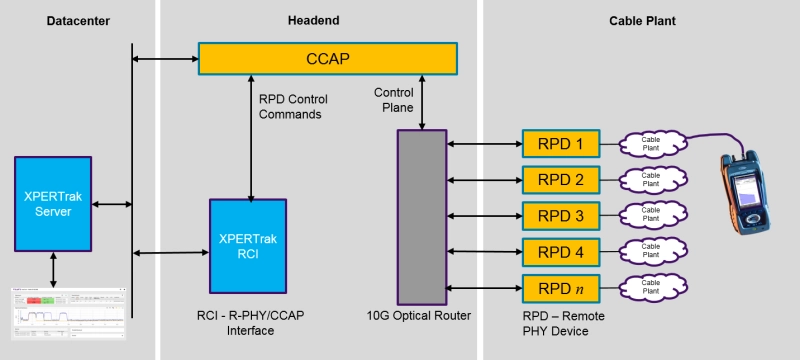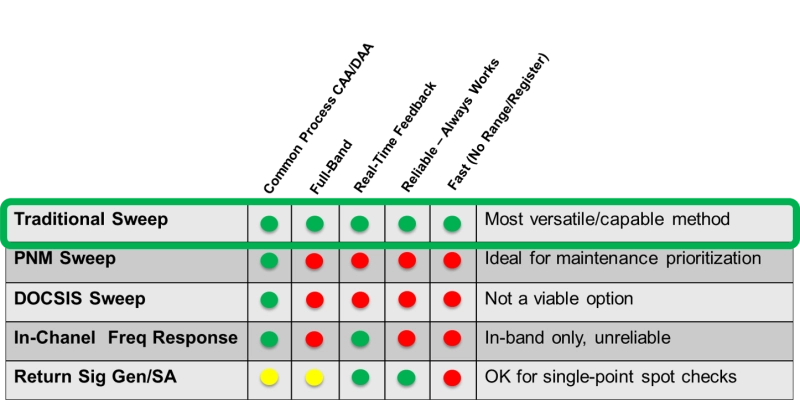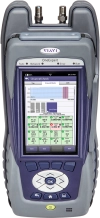Sweep Testing with Remote PHY
The question keeps coming up, “Do we still need to test once Remote PHY is deployed?” The short answer is yes.
The same parts of the network that malfunctioned before deploying Remote PHY can still malfunction and degrade after deployment, so testing will be critical.
This leads to the question of how to test in a network that has deployed Remote PHY, since the RF feed has been removed from the headend. Testing should still take place, but how testing is conducted will change. Let’s look at the three main items that must be taken into consideration.

- As mentioned before, distributed access architectures (DAA) such as Remote PHY eliminate the return RF feed in the headend. In cases where Remote PHY has been deployed, return sweep and upstream spectrum analysis are still possible using existing meters/processes via virtualization of previously hardware-based components.
- Maintenance techs generally spend 80% or more of their time finding and fixing upstream ingress. While R-PHY is often used to push fiber deeper and shrink amplifier cascades, it does not change the portion of the plant where the vast majority of the ingress enters – from the tap down. You will still need the best Remote Phy tools possible to address upstream ingress even after R-PHY migrations.

- As stated above, the vast majority of R-PHY nodes will NOT be N+0 and will have actives that need to be set up and maintained. Some of the alternatives to traditional return sweep adequately cover a few use cases, but in most cases traditional sweep is still the best and only choice
New testers have been designed to be adaptable to keep up with evolving networks. These testers are now modular, so once you upgrade, you’ll be able to swap modules as testing needs change instead of continuously upgrading to a new tester. The new testers also interact with both physical and virtual test systems, so you’re covered as MSOs virtualize their networks.
To learn more about Remote PHY, please read Remote PHY Architectures: Operational Challenges and Opportunities and visit the Remote Phy resource page.


